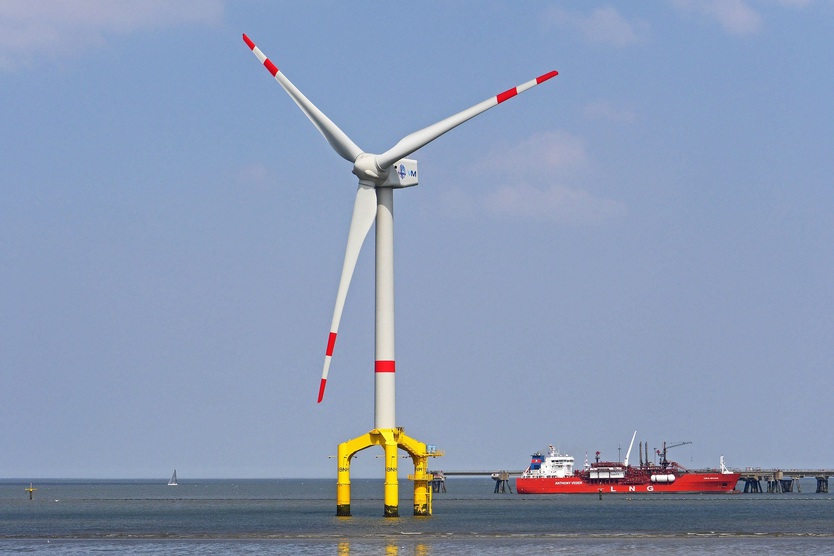
Predictive and remote maintenance can save high costs compared to on-site inspections
© Pixabay
Offshore wind turbines are very popular in Germany. Building them in locations far away from the mainland has enabled their rapid expansion, as there is hardly any resistance to be had from the local population. For energy companies, they also represent an effective technology for reliably generating large amounts of renewable energy, since the winds blowing over the sea are more constant and stronger than on land. When comparing onshore and offshore plants, it quickly becomes clear that offshore plants are considerably more efficient. The roughly 30,000 onshore plants generate an average of 550 kW per plant, while offshore power plants can already produce as much as 4.9 MW per plant. In the North Sea and in the Baltic Sea, the installed output capacity is to be increased up to 15 GW by 2030. Based on the favourable responses received in tenders in previous years, forecasts predict that this target will be reached before 2030.
However, the cost of operating and maintaining the plants will continue to rise in future as a result of the expansion. Corrosion is naturally one of the main problems in the offshore sector. The rotors, nacelles and foundations are permanently exposed to environmental conditions that have a negative impact on the proper functioning of the plant. The formation of rust can lead to damage, especially to the underwater foundations of the plants, and the tidal range also has a negative impact on the plants.
This is the focus of a collaborative project involving research institutions, plant constructors and engineers. Within the framework of the KKS project, methods and instruments are being developed to monitor and contain the progression of corrosion on the foundations of offshore wind turbines. This will prevent time-consuming, on-site maintenance work in future. The project participants are carrying out FEM simulations and developing the appropriate robust measurement technology for use on the open sea. By means of a so-called cathodic corrosion protection, the corrosion is to be slowed down. Cathodic corrosion protection is an electrochemical process that protects metal surfaces from corrosion by applying an electric direct current. The technology is proven and is already used today in a large number of reinforced concrete structures (e.g. bridges and tunnels). The technologies will be tested in the project and in a laboratory container under real conditions. Subsequently, recommendations for the steel design will be developed.
A pleasant side-effect of the technology is that, due to there being less corrosion, more refined and lighter-weight foundations can be constructed in future, which means considerable savings in material and cost can be made. The project is being funded by the Federal Ministry for Economic Affairs and Energy until 2021.


